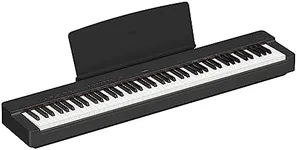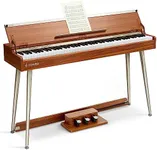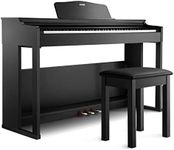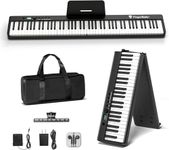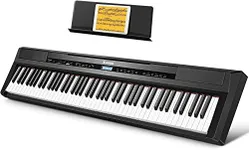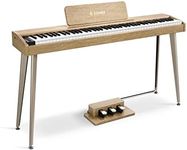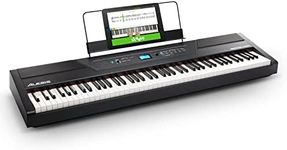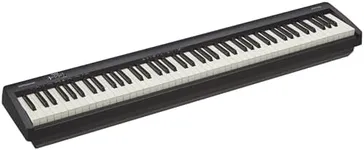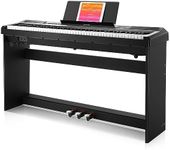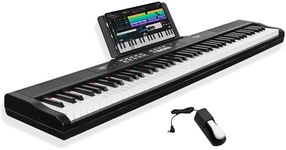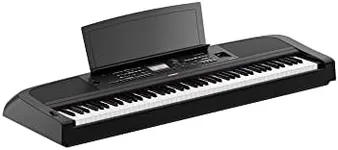Buying Guide for the Best Digital Piano 88 Key
Choosing a digital piano with 88 keys is a great step for anyone interested in learning or playing piano, as it closely matches the size and feel of an acoustic piano. When shopping for a digital piano, it's important to consider how you plan to use it—whether for practice, performance, recording, or casual play. Understanding the key features will help you find a model that fits your needs and supports your musical growth.Key Action (Weighted, Semi-Weighted, Hammer Action)Key action refers to how the keys feel and respond when you press them. This is important because it affects how closely the digital piano mimics the feel of an acoustic piano. Weighted and hammer action keys are designed to feel heavier, like a real piano, which is ideal for those who want an authentic playing experience or are training for acoustic piano. Semi-weighted keys are lighter and easier to press, which can be good for beginners or those who want a lighter touch. If you want to develop proper finger strength and technique, go for fully weighted or hammer action keys. If comfort and ease are more important, semi-weighted might be a better fit.
PolyphonyPolyphony is the number of notes a digital piano can play at the same time. This matters because complex pieces, use of the sustain pedal, or layered sounds can require many notes to be played simultaneously. Entry-level models may offer 32 or 64-note polyphony, which is enough for simple songs, while more advanced models offer 128 or even 256-note polyphony, which is better for complex music and ensures no notes are cut off. If you plan to play classical or layered music, higher polyphony is important. For basic practice, lower polyphony is usually sufficient.
Sound Quality and SamplingSound quality is determined by how the piano samples and reproduces the sound of real instruments. This is important because it affects how realistic and enjoyable your playing experience is. Some digital pianos use basic samples, while others use high-quality, multi-layered samples for richer, more dynamic sound. If you value a realistic piano sound or plan to perform or record, look for models with advanced sampling technology. For casual play, basic sound quality may be enough.
Speakers and AmplificationThe built-in speakers and their power affect how loud and clear the piano sounds. This is important if you plan to play in larger rooms or want to share your music with others. Smaller speakers are fine for personal practice, while larger or more powerful speakers are better for group settings or performances. If you plan to use headphones or external speakers most of the time, built-in speaker quality may be less important.
Portability and SizePortability refers to how easy it is to move the piano around. This is important if you need to transport your piano between locations or have limited space at home. Some digital pianos are lightweight and slim, making them easy to move, while others are heavier and designed to stay in one place. If you need to move your piano often, choose a lighter, more portable model. If it will stay in one spot, a larger, more robust model may offer better stability and features.
Connectivity (MIDI, USB, Audio Outputs)Connectivity options allow you to connect your digital piano to computers, recording equipment, or other devices. This is important if you want to use music software, record your playing, or connect to external speakers. Basic models may have limited connectivity, while more advanced ones offer MIDI, USB, and various audio outputs. If you plan to compose, record, or use learning apps, look for a piano with the right connections for your needs.
PedalsPedals, especially the sustain pedal, are important for expressive playing. Some digital pianos come with a basic pedal, while others offer a full set of three pedals like an acoustic piano. If you want to play classical music or need more expressive control, look for a model with a full pedal set. For beginners or casual players, a single sustain pedal may be enough.
